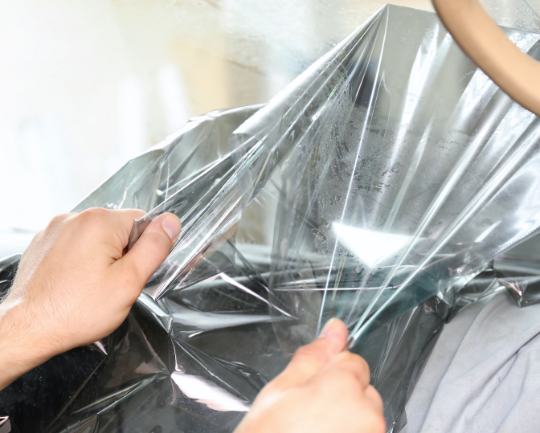Automotive window tinting is more than just a cosmetic enhancement for your vehicle; it’s a skillful art that combines precision, technology, and aesthetics. In recent years, window tinting has evolved from being a luxury accessory to a practical necessity, offering a range of benefits beyond just style. In this comprehensive guide, we’ll delve into the art of automotive window tinting, exploring its history, the science behind it, the various types of films available, and the benefits it brings to both the vehicle and its occupants.
A Brief History of Automotive Window Tinting
The practice of window tinting dates back to the early 1960s when adhesive films were first developed for use in military aircraft. It didn’t take long for automotive enthusiasts to recognize the potential of these films for their vehicles. Over the years, window tinting has become an integral part of car customization, offering both functional and aesthetic advantages.
The Science Behind Window Tinting
Understanding the science behind automotive window tinting is crucial for appreciating the artistry involved. Window tinting films are typically made from layers of polyester and other materials that are coated with various compounds. The most common types of compounds include dyes, metals, and ceramics. These compounds work together to control the amount of light and heat that enters the vehicle.
- Dye-Based Films: These films use dye to absorb solar energy and reduce light and heat transmission. They are cost-effective but may fade over time due to exposure to sunlight.
- Metalized Films: Metalized window tinting films contain small metallic particles that reflect and block sunlight. While effective in reducing heat, they may interfere with electronic signals and are less visually appealing.
- Ceramic Films: Ceramic window tinting films utilize nano-ceramic technology to block infrared radiation without the use of metals. They provide excellent heat rejection, UV protection, and signal clarity.
Types of Window Tinting
There are various types of window tinting films available, each catering to different preferences and needs. The most common types include:
Dyed Window Tinting
Dyed films are a budget-friendly option that uses dye to absorb solar energy. These films effectively reduce light and heat transmission into the vehicle, providing a level of privacy and basic protection. However, it’s important to note that dyed films may experience fading over time due to prolonged exposure to sunlight.
Carbon Window Tinting
Carbon films offer a step up from dyed options, providing enhanced heat rejection and a sleek, matte finish. The carbon particles within the film contribute to improved durability, making them less prone to fading compared to dyed films. This type of tinting strikes a balance between affordability and performance, making it a popular choice among car owners.
Metalized Window Tinting
Metalized films incorporate small metallic particles that effectively reflect and block sunlight. While these films excel at reducing heat, they may pose challenges by interfering with electronic signals, such as those used for GPS and radio reception. Despite this drawback, metalized window tinting remains a robust choice for those seeking significant heat reduction and added privacy.
Ceramic Window Tinting
Ceramic films represent the pinnacle of window tinting technology. Utilizing nano-ceramic technology, these films block infrared radiation without relying on metallic components. Ceramic window tinting provides exceptional heat rejection, superior UV protection, and maintains optimal signal clarity for electronic devices. Although it comes at a higher cost, the benefits in terms of performance and aesthetics make it a preferred option for discerning vehicle owners.
Crystalline Window Tinting
Crystalline window tinting is a high-performance option, offering outstanding heat rejection while maintaining optical clarity. Developed by leading manufacturers, this type of tinting utilizes multiple layers of optical film to achieve a nearly clear appearance. Crystalline films provide excellent UV protection, making them an ideal choice for those who prioritize visibility and maximum heat reduction without compromising on aesthetics.
The Artistic Process of Application
Applying window tinting is not just a mechanical process; it requires a skilled hand and an artistic eye. Professional tint installers follow a meticulous process to ensure a flawless and durable application:
Surface Preparation
To initiate the process, the installer meticulously cleans the windows, removing all dirt, debris, or residue that could compromise the adherence of the tint film. This crucial step ensures a pristine surface, paving the way for a seamless application.
Precise Measurements
Each window undergoes precise measurements, ensuring that the tint film is tailored to fit perfectly, free from gaps or overlaps. This attention to detail is vital for achieving both aesthetic appeal and optimal functionality.
Film Cutting
Armed with precise measurements, the installer then embarks on the intricate task of cutting the window tint film. Precision is paramount during this stage, with the installer carefully navigating the contours of each window to guarantee a snug and exact fit.
Application
The tint film is delicately applied to the inside surface of the windows. During this phase, the installer utilizes a special solution that not only facilitates adhesion but also prevents the formation of unsightly air bubbles. The meticulous application process ensures a smooth, uniform finish that enhances both the appearance and performance of the window tint.
Quality Inspection
Following the application, the installer conducts a comprehensive quality inspection. This meticulous examination aims to identify and eliminate any imperfections. Whether it be air bubbles, uneven application, or other anomalies, the installer’s keen eye ensures that the final result is nothing short of perfection. This quality control step is crucial for delivering a flawless, durable window tint that meets the highest standards of craftsmanship.
 Benefits of Automotive Window Tinting
Benefits of Automotive Window Tinting
Beyond the aesthetic appeal, automotive window tinting offers a multitude of practical benefits:
- Heat Reduction: Tinted windows significantly reduce the amount of heat entering the vehicle, creating a more comfortable interior environment and reducing the need for excessive air conditioning.
- UV Protection: Window tinting blocks harmful UV rays, protecting both the vehicle’s interior and its occupants from sun damage. This helps prevent fading and cracking of upholstery, dashboards, and other surfaces.
- Glare Reduction: Tinted windows reduce glare from the sun and headlights, improving visibility and enhancing driving safety, especially during sunrise, sunset, or nighttime.
- Enhanced Privacy: Window tinting provides a level of privacy by limiting the visibility into the vehicle, allowing occupants to feel more secure and comfortable.
- Interior Preservation: By blocking UV rays and reducing heat, window tinting helps preserve the integrity of the vehicle’s interior materials, extending the lifespan of upholstery, leather, and plastic components.
Automotive window tinting is more than a mere accessory; it’s a skillful blend of science and art that enhances the driving experience in numerous ways. As technology advances and new materials are developed, the art of window tinting continues to evolve, offering even more benefits and customization options for vehicle owners.
Whether for style, comfort, or practicality, investing in professional window tinting is a decision that goes beyond the surface, contributing to the overall well-being of your vehicle and its passengers. Mastering this art ensures that you not only ride in style but also enjoy the many functional advantages that automotive window tinting has to offer.




